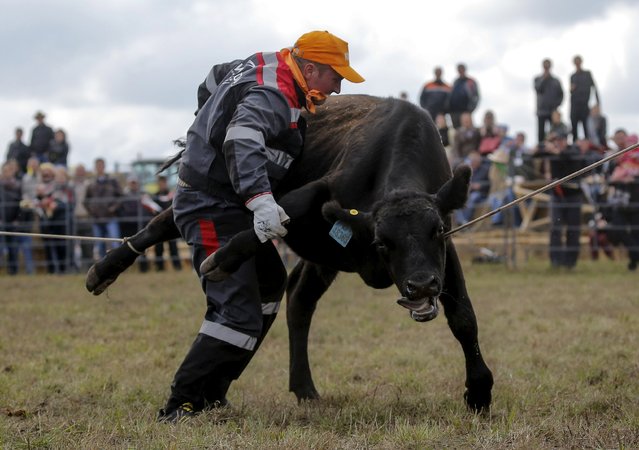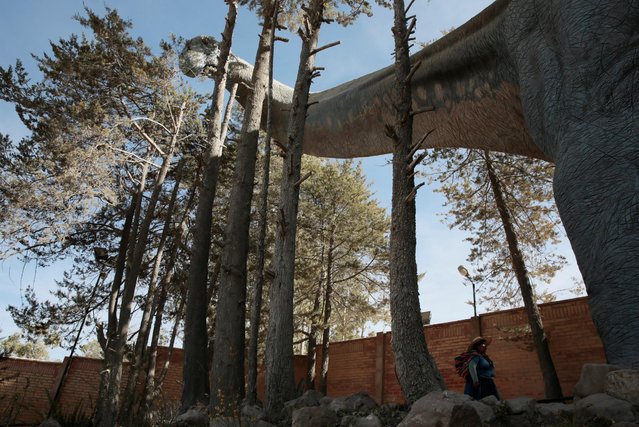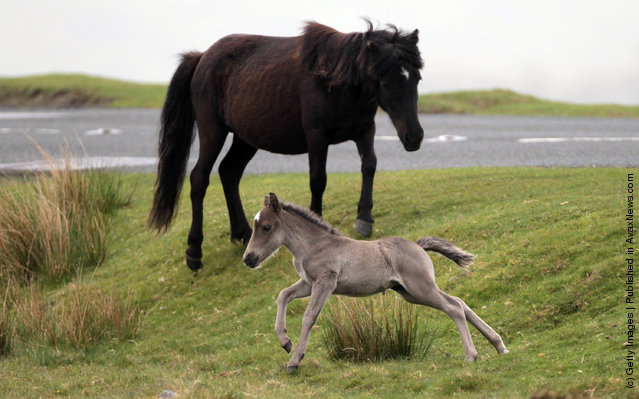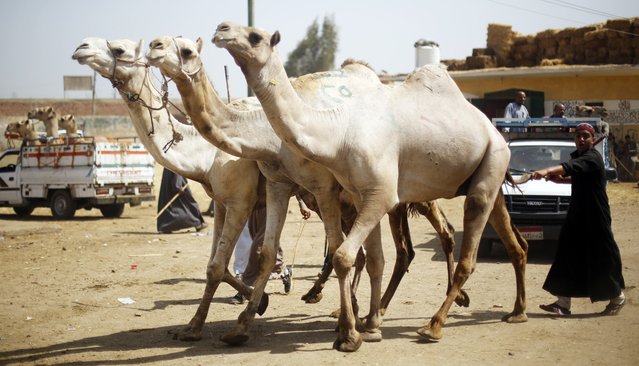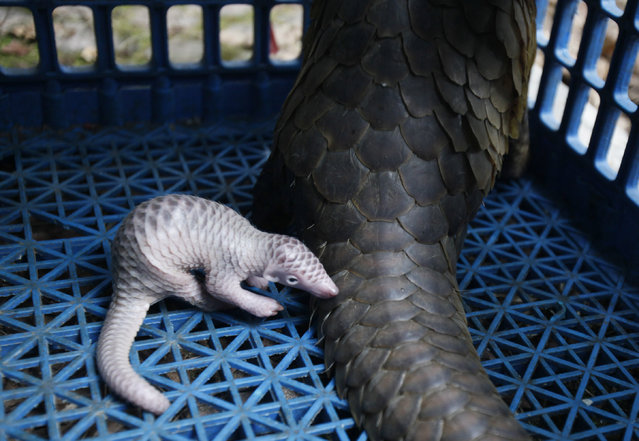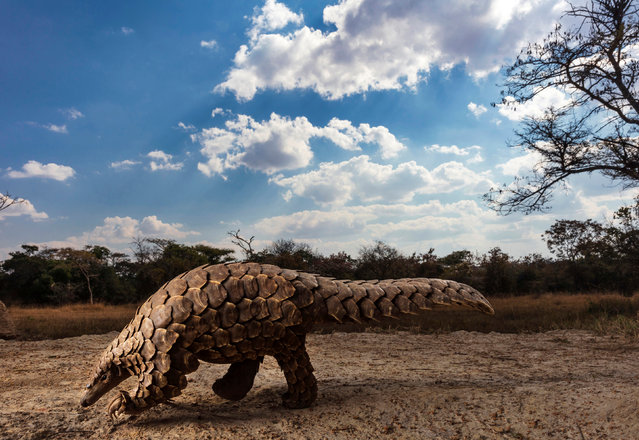
Devotees of the Chinese Jui Tui shrine are seen with spikes piercing their cheeks during a procession celebrating the annual vegetarian festival in Phuket, Thailand in this October 19, 2015 combination photo. The festival, featuring face-piercing, sacrifice, spirit mediums and strict vegetarianism celebrates the local Chinese community's belief that abstinence from meat and various stimulants during the ninth lunar month of the Chinese calendar will help them obtain good health and peace of mind. (Photo by Jorge Silva/Reuters)
22 Oct 2015 08:01:00,post received
0 comments

